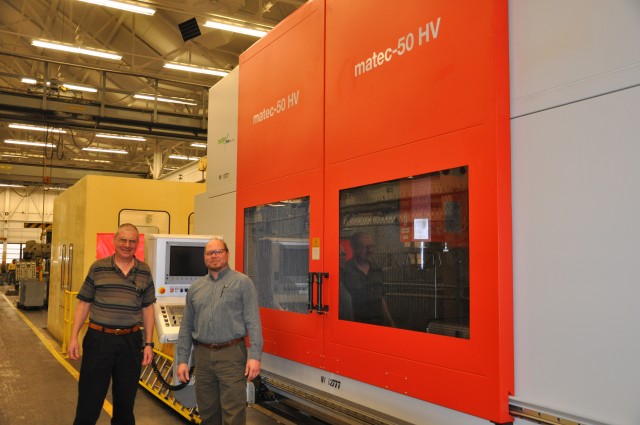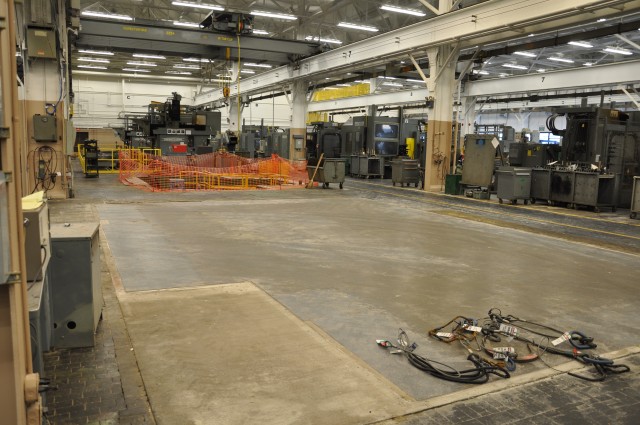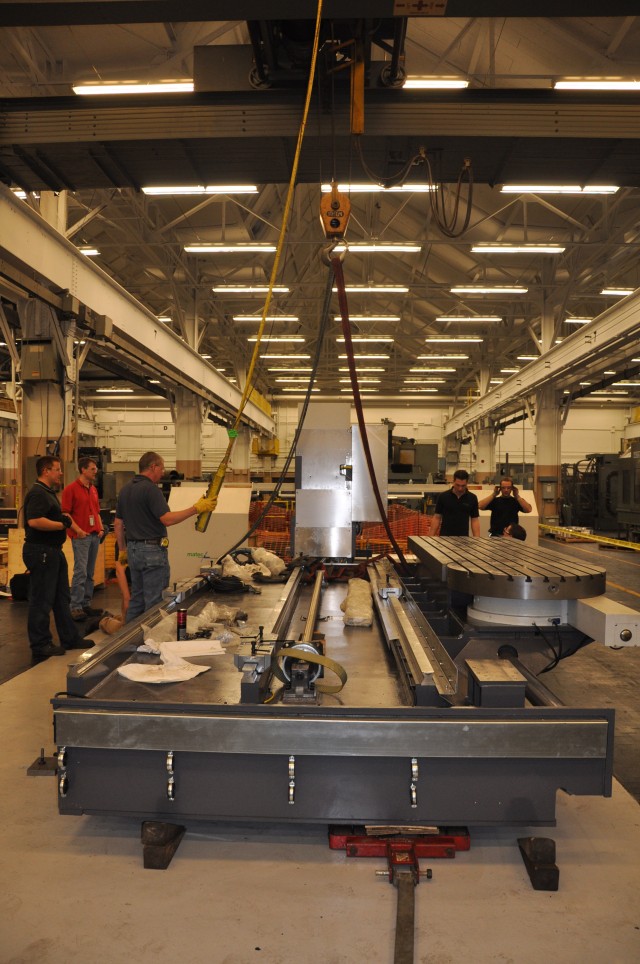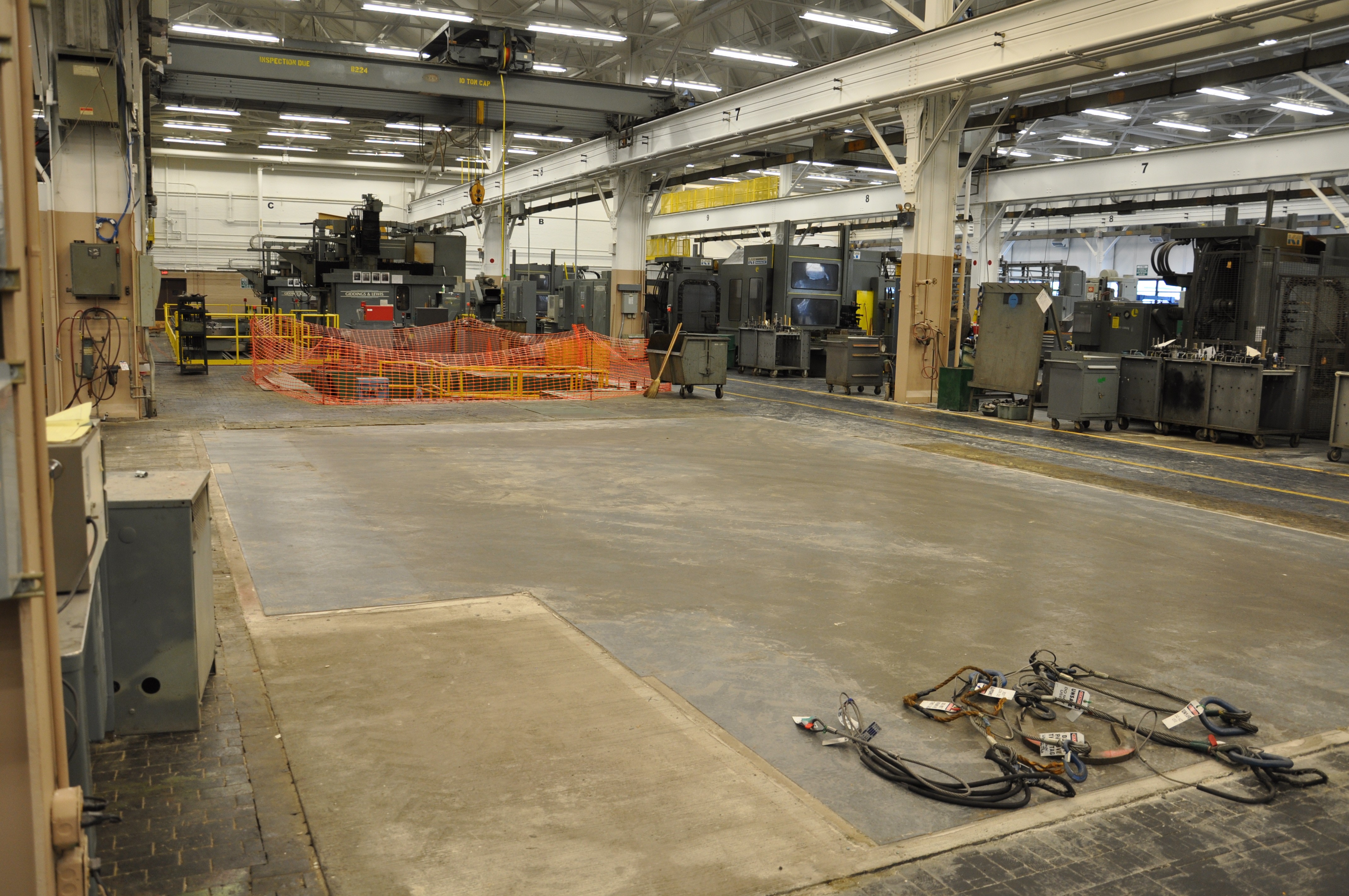WATERVLIET ARSENAL, N.Y. - With all the strategy of a world championship chess match, the Watervliet Arsenal is transforming underutilized manufacturing space into state-of-the-art capability. Machine by machine, square foot by square foot, the Arsenal is, through a program called the Capital Improvement Program or CIP, methodically opening up floor space for advanced machining. Through CIP, the Arsenal will significantly improve its capability to manufacture legacy and future weapon systems.
According to Bill Dingmon, Industrial Operations foreman at the Arsenal, "Despite more than 2 million square feet of floor space at the Arsenal, only about half of that is available for manufacturing." The rest of the floor space at the Arsenal is for support-type operations such as supply, resource management, and maintenance.
Because the Arsenal cannot build more buildings to improve its manufacturing capability due to its current workload requirements, it must therefore transform underutilized space and do so while not negatively affecting existing operations, Dingmon said.
"The retrofit process, from concept to operational testing of new machines, can take years if we allowed it to," Dingmon added. "Because we have to run the Arsenal like a business, we do not have the luxury of time and so, we quickly move through the process."
Dingmon's "battle buddy" in this retrofit process is Bryan Myers, Industrial Engineer Technician.
Myers said that identifying space and then finding the right machinery that will not only improve the Arsenal's manufacturing capability, but also will fit into the cleared space is a matter of science and art.
To remove heavy industrial equipment, that some date back to World War II, is not as easy as going to the local Sears store and asking for a new refrigerator to be delivered. And while Sears is at it, having the deliveryman remove the old refrigerator and take it away.
"The science is identifying a piece of equipment that no longer provides us much utility and then finding a modern machine that will fit into the same space of the old machine while adding capability," Myers said. "You have got to keep in mind that newer machines actually take up more space because of requirements for such things as computer controls and cooling assemblies."
Dingmon and Myers used as an example the recent arrival of two new machines in Building 20, which is a major components building built during World War II.
Once Building 20's equipment replacement plan was approved by the director of Industrial Operations & Production, it then weaved its way through a maze of contracting, maintenance, and supply, Myers said.
This is where the "art" to retrofitting a capability comes in.
"Each time we replace a piece of equipment, it takes the integration and synergy of the entire Arsenal to ensure success," Myers explained.
Beginning in May 2008, Dingmon and Myers began coordinating the purchase of two traveling column machines from GBI Cincinnati, Inc.
What that means to the layman is that the Arsenal now has in Building 20 two state-of-the-art precision engineering machines with swivel heads that may do horizontal and vertical machining on a fixed long-bed table. In essence, instead of stopping the machine to move the head from one angle to another for boring or milling, the computer-controlled swivel head assembly moves automatically without any work stoppage.
"The GBI machines arrived in December and have recently passed operational testing," Myers said. "The last step before they go into production is to provide operator training in February."
Despite a cost of these machines at more than $2.3 million, this is just one of many CIP projects the Arsenal has recently funded. In the last two fiscal years, the Arsenal has obligated more than $34 million to capital improvements and the Arsenal leadership has plans to spend another $10 million this fiscal year to further improve the Arsenal's manufacturing capability.
Regarding what happens to the old machine that has been replaced, the Arsenal goes through a deliberate process to reuse, transfer, donate, or dispose of the property in a way that is financially advantageous to the Arsenal and to the Army.






Social Sharing